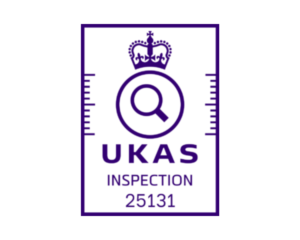As a founder member of the Access Industry Forum, FASET is pleased to share the following story on retaining the Work at Height Regulations.
The Retained EU Law Bill (REUL) is in the press again this month and there’s been some encouraging signs for all of us who care about preventing falls from height. On the face of it, the news reports might have you believing that the Work at Height Regulations are now safe, but is it really time to stop writing letters and start celebrating?
Spoiler alert: the answer is, unfortunately, no.
Having said that, there have been definite steps in the right direction. The latest of these was on Monday, when two amendments were passed by peers in the House of Lords in what amounts to a defeat for the Government.
However, while this is great news, there’s still no guarantee that people who work at height will get to keep the specific protections that exist in law to keep them safe. In other words, the Work at Height Regulations are not safe yet.
The amendments
The amendments follow last week’s statement from Secretary of State for Business & Industry, The Rt Hon Kemi Badenoch MP, who announced a change in approach to the ‘sunsetting’ of EU Retained Law. The controversial sunset clause meant that 4,800 EU-derived laws, including the Work at Height Regulations, were set to be automatically repealed at the end of the year.
This amendment was passed by the House of Lords on Monday and the indiscriminate sunset clause has been replaced with a much shorter list of 600 retained EU laws that the Government intends to revoke.
In addition, the Lords also voted to give the devolved governments of Scotland, Wales and Northern Ireland the final say on whether EU rights should be kept in their respective countries, rather than Westminster ministers.
So what about the Work at Height Regulations?
While it’s a huge relief to see that the Work at Height Regulations do not appear on the list of laws to be revoked, their future remains uncertain. They’re no longer at imminent risk of being ‘sunsetted’ at the end of the year, but the potential for reform remains and this could result in a ‘watered down’ version of the regulations. There’s also the possibility that the Government could amend REUL again.
Once again, the devil will be in the detail. As The Rt Hon Kemi Badenoch MP said in her statement on 10 May, “We will still fully take back control of our laws and end the supremacy and special status of retained EU law by the end of 2023. We will also make our laws fit for UK purposes: reducing the regulatory burden and controlling the flow of new regulation. We will no longer tie business up in red tape.”
Until we know what this means for the Work at Height Regulations, we can’t let this rest.
Our message
Today we’re renewing our call to the Government to assimilate the Work at Height Regulations into UK law and continue the protections that UK workers have benefitted from for 18 years.
In addition, we support other bodies who have asked for guarantees that health and safety won’t be compromised as a result of REUL, including IOSH who are campaigning for ministers to remove provisions in the Bill relating to health and safety entirely.
It’s entirely possible that some areas of health and safety law could benefit from reform, but let’s please dispense with the artificial deadlines, get the right stakeholders involved in the process and importantly, do it without losing sight of why the laws were needed in the first place.
If there’s an appetite for reviewing the Work at Height Regulations, we would welcome the opportunity to work with the Government to achieve this while maintaining the core life-saving principles that keep workers safe from falls. We are concerned that the ongoing uncertainty is detrimental to industry, so would urge the Government to clarify their intentions here.
In closing
The Work at Height Regulations are important to anyone who works at height as part of their job. It’s a daily occurrence, with an estimated 10 million of us climbing a ladder, ascending scaffolding or finding another way to work at height every year. The Regulations have led to a reduction in falls since their introduction in 2005, but falling from height remain the most common cause of workplace fatalities and a major cause of life-changing injuries. We cannot afford to take a backwards step.
So, while we are cautiously optimistic that things are moving in the right direction, this is no time for complacency or celebration. The Access Industry Forum will continue to monitor the situation carefully and provide updates as soon as they are available.









